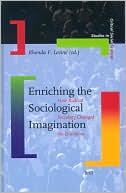
Sophie Germain: An Essay in the History of the Theory of Elasticity
작성자
L.L. Bucciarelli
,
N. Dworsky
아직 평점이 없습니다
Science & Technology
History
형식
킨들
페이지
205
언어
네덜란드어, 플라망어
출판됨
Jan 1, 2012
출판사
Springer
판
1980
ISBN-10
9400990510
ISBN-13
9789400990517
설명
This exploration delves into the significant contributions of Sophie Germain, a pioneering figure in the field of elasticity theory. The narrative unfolds against the backdrop of a male-dominated scientific landscape, illuminating how Germain navigated societal challenges to carve her own path in mathematics and physics. Her determination and intellect shine through, providing a compelling account of a woman's quest for recognition in a field often closed to her.
The authors skillfully highlight Germain's groundbreaking work and the enduring impact of her theories on contemporary science. They contextualize her achievements within the historical framework of her time, offering insights into the obstacles she faced and the resilience she demonstrated in overcoming them. The discussion not only celebrates her genius but also prompts reflection on the broader implications of gender in the scientific narrative.
Amidst the technical discussions of elasticity, the book is rich with the human elements of Germain's story. It unveils her struggles, both personal and professional, and her unwavering commitment to her research. The dynamic portrayal of her life invites readers to connect with her as an individual, not just as a scientist.
This examination ultimately serves as a testament to the importance of including diverse voices in the history of science. It advocates for a more inclusive narrative that recognizes the contributions of women like Germain, ensuring that future generations perceive the rich tapestry of scientific progress as a shared endeavor.
The authors skillfully highlight Germain's groundbreaking work and the enduring impact of her theories on contemporary science. They contextualize her achievements within the historical framework of her time, offering insights into the obstacles she faced and the resilience she demonstrated in overcoming them. The discussion not only celebrates her genius but also prompts reflection on the broader implications of gender in the scientific narrative.
Amidst the technical discussions of elasticity, the book is rich with the human elements of Germain's story. It unveils her struggles, both personal and professional, and her unwavering commitment to her research. The dynamic portrayal of her life invites readers to connect with her as an individual, not just as a scientist.
This examination ultimately serves as a testament to the importance of including diverse voices in the history of science. It advocates for a more inclusive narrative that recognizes the contributions of women like Germain, ensuring that future generations perceive the rich tapestry of scientific progress as a shared endeavor.



















